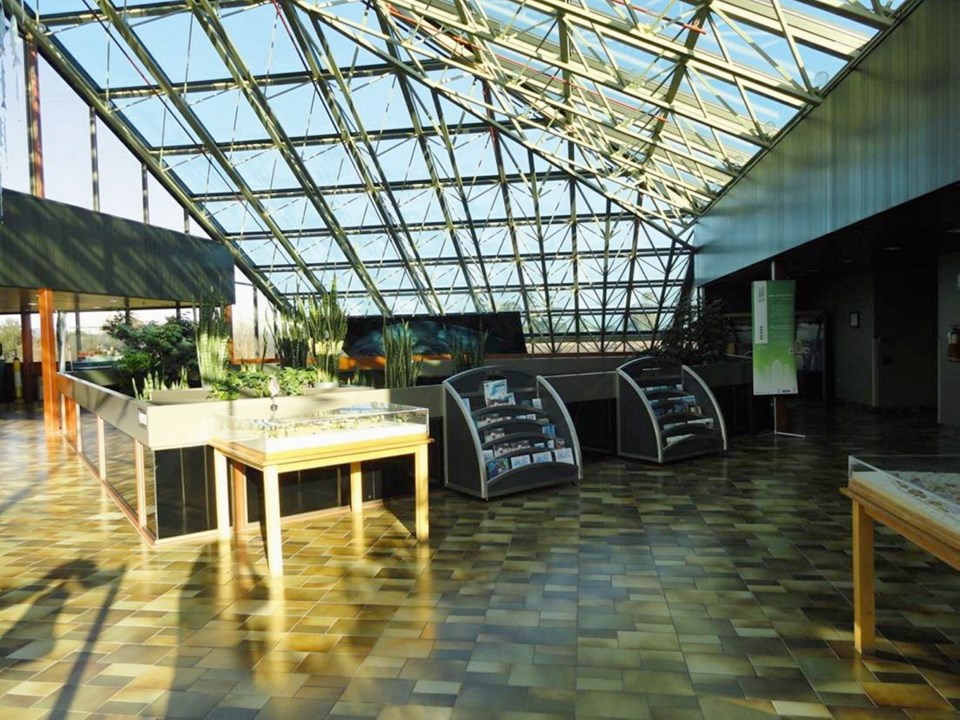 There not having been a serious terrorist attack on the Saanich Peninsula in recent memory, Rick Hoos can’t quite understand why Ottawa won’t let the public stroll in to see the public exhibits at the Institute of Ocean Sciences.
There not having been a serious terrorist attack on the Saanich Peninsula in recent memory, Rick Hoos can’t quite understand why Ottawa won’t let the public stroll in to see the public exhibits at the Institute of Ocean Sciences.
For years the White Rock man has, on occasional trips to Victoria, enjoyed poking his nose into the building to look at the displays in the foyer of the Patricia Bay facility.
As an oceanographer and marine biologist, he likes to check out the models of research ships, exhibits on sea-level change, the 3D re-creation of a vent pumping hot water out of the ocean floor.
Except last weekend, when he decided to share the experience with his wife, they found their way blocked. Sorry, no more wandering into the foyer.
It’s a security thing, they were told.
Hoos, who conducted research at the site in the 1960s and has visited scientists there many times in his professional career, is unimpressed.
“These exhibits were set up for visitors and have been there for the past 20, 30 years,” he said. “Even though we are taxpayers, and even though these are lovely displays, we cannot enjoy them anymore.”
The Department of Fisheries and Oceans disagrees.
Unescorted access might be no more, but it argues that the implementation of scheduled tours led by knowledgeable staff actually makes for better public engagement: “This change improves interaction with the public in that the escort can describe the history and significance of the display, how it is representative of the programs and science that operates out of IOS, and can respond to questions from the public.”
OK, escorted tours are great, but that still doesn’t help the spur-of-the-moment drop-in visitor like Hoos, who can’t see any good reason to be denied a simple pleasure that he has enjoyed for decades. He was told the security measures, enacted July 1, flowed from the 2014 killing of an unarmed sentry on Parliament Hill.
No, DFO replies, the changes came out of one of the threat assessments commonly conducted at all federal facilities.
Which, gosh, doesn’t necessarily fill us with joy. For just as you can predict the answer if you ask a shoe salesman whether you need new shoes, you can be pretty sure what a security expert’s recommendation will be after a threat assessment: more security, often trumping all other considerations.
This is the legacy of 9/11: Bureaucratic flailing in the name of keeping us safe. Publicly funded paranoia. Security measures disproportionate to any actual threat, with the mere possibility of attack raised to the probability of one.
Could the Institute of Ocean Sciences be the target of an attack? Of course it could. So could B.C. Ferries, which is why in 2009 a security expert called for armed guards on all sailings. So, we have been warned at various times, could our hospitals, ports, airports, power plants and pipelines.
So, for that matter, could Crazy Larry’s Discount Stereo Emporium, your neighbourhood block party, or the lemonade stand on the Galloping Goose Trail.
In theory, absolutely everything is a potential target. That doesn’t mean they’re actually on the top of ISIS’s to-do list, or that we should be subjected to an ion scan and/or cavity search before being admitted to Wednesday night bingo in the church basement.
But we’re not exactly great at balancing that whole possibility-vs-probability thing. (Once again, let’s harken back to 2001 when the discovery of anthrax in a few letters in the U.S. triggered evacuations on Vancouver Island — the premier’s office, the Salt Spring ferry, a building at CFB Esquimalt — whenever unexplained white powder showed up.)
Blogger Lenore Skenazy put it this way in July when lamenting plans to fence off Washington, D.C.’s National Zoo and shut 10 of its 13 entrances, all in the name of stopping terrorists from ploughing their cars into people there: “The problem with the fortressing of the zoo is what it represents: security overkill. Once you start looking for danger, you will see it everywhere. Which means that once you decide a particular place could be a target and start imagining how to protect it, you go down the prairie dog hole of preventing something that isn't likely to happen.” If the inside of the zoo needs protection, why not the outside?
But you can’t question this stuff. People who grumbled about the heavy, military-style police presence at Vancouver’s Italian Day festivities this summer were told to get over it, that dumptrucks-as-barricades and carbine rifles are the new normal at any large public event, thanks to the global phenomenon of terrorists crashing their cars into crowds.
Things are different today, we’re told. Yes they are, we reply, regarding the incremental diminution of our ever-more-restricted lives.
Just ask Rick Hoos.



